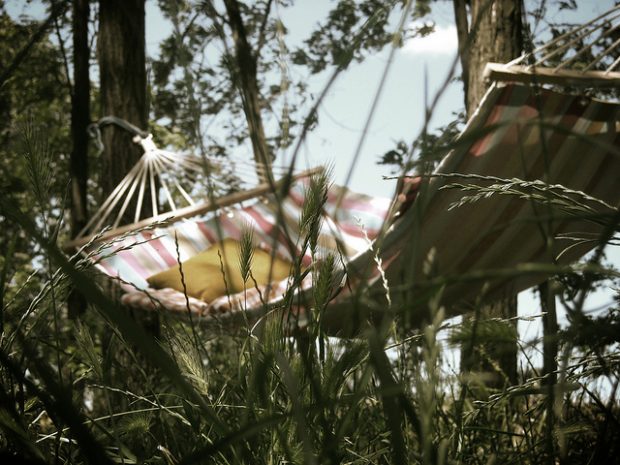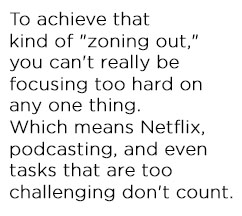
Joshua Rothman recently noted in The New Yorker that creativity is rapidly becoming one of the most coveted traits.
“Everyone wants to be more creative,” he writes, noting “creativity is now a literary genre unto itself.” He’s right, of course; every day, more books, studies, articles, and theories are published about how we can unlock creativity, how we can harness it, and where it comes from. And while there are plenty of potential methods of freeing your own creative thought — alcohol, caffeine, doodling, exercise — there is one common thread that seems to keep cropping up. Time and again, the research points to the simple fact that to do more, the human brain needs to, at times, be given the ability to do nothing at all.
“Brain idling” is credited as the secret ingredient behind so many of the things that creative people love and enjoy and need. The need to unplug and just exist is why we enjoy time outside, why we shouldn’t be staying at work so long or so late, why we prefer to use analog tools, why so many of the greatest thinkers took walks and played games and did puzzles — or at least, that’s what the science seems to be indicating.
Studies from Washington University and the Medical College of Wisconsin have both found that allowing the brain to idle is not just beneficial, but essential.
“[The researcher] favours the idea that activity in the resting state helps the brain to stay organized,” explains Kerri Smith for Nature. “The connections between neurons are continually shifting as people age and learn, but humans maintain a sense of self throughout the upheaval. Spontaneous activity might play a part in maintaining that continuity.”
Writing for Forbes, Lawson Ursery noted how much of a relief this kind of study can be for creative people, who often feel trapped in a grind that requires greater and greater output.
“Encouraging creativity by doing ‘nothing’ means we have a lot to look forward too—and less to apologize for.”
But what does “nothing” actually mean? Does it mean zoning out in front of endless episodes of Game of Thrones, or does it mean reading a book? Does gardening count? What about exercise? Listening to podcasts?
 The truth is, your brain never fully ceases to work. So the key to great idling is to get all of the brain’s functions to idle in sync with each other, according to the neuroscience. Melissa Healy explained the idea in The LA Times:
The truth is, your brain never fully ceases to work. So the key to great idling is to get all of the brain’s functions to idle in sync with each other, according to the neuroscience. Melissa Healy explained the idea in The LA Times:
“Individually, the brain regions that make up that network have long been recognized as active when people recall their pasts, project themselves into future scenarios, impute motives and feelings to other people, and weigh their personal values.”
But when these structures hum in unison — and scientists have found that when we daydream, they do just that — they function as our brain’s ‘neutral’ setting.”
To achieve that kind of “zoning out,” you can’t really be focusing too hard on any one thing. Which means Netflix, podcasting, and even tasks that are too challenging don’t count. The impact of daydreaming or true idling are “in sharp contrast to the pattern struck by the brain when hard at work: In this mode, introspection is suppressed while we attend to pressing business — we ‘lose ourselves’ in work,” writes Healy, “As we do so, scientists see the default mode network go quiet and other networks come alive.”
The best way to idle, then is to let your mind truly wander. And of course, there’s no one right way to achieve this. However, if you are making it a purpose to schedule unstructured brain idling time (which you probably should, especially if you’re feeling particularly burned out), it’s best to do it in ways that will actually allow your mind to power down to its neutral state.
Activities that put your physical body to work but don’t require a great deal of mental effort, like exercise (without distractions — think a leisurely walk, hike, or bike ride without your phone or earbuds), yoga, meditation, gardening, or cooking, can all help give your brain a chance to slip into that default mode and quiet the other activities it usually focuses on. The duration doesn’t seem particularly important, either; even just 10 minutes of allowing your mind to wander seems to help it reorganize some of its activities and ideas.
Despite the drive to always be making something or doing something productive, the truth is that the brain does need some time off. And while it may feel lazy or unproductive to give your mind a chance to wander, think of it like a tiny vacation — necessary for your sanity, and ultimately, better for your creativity and productivity.


